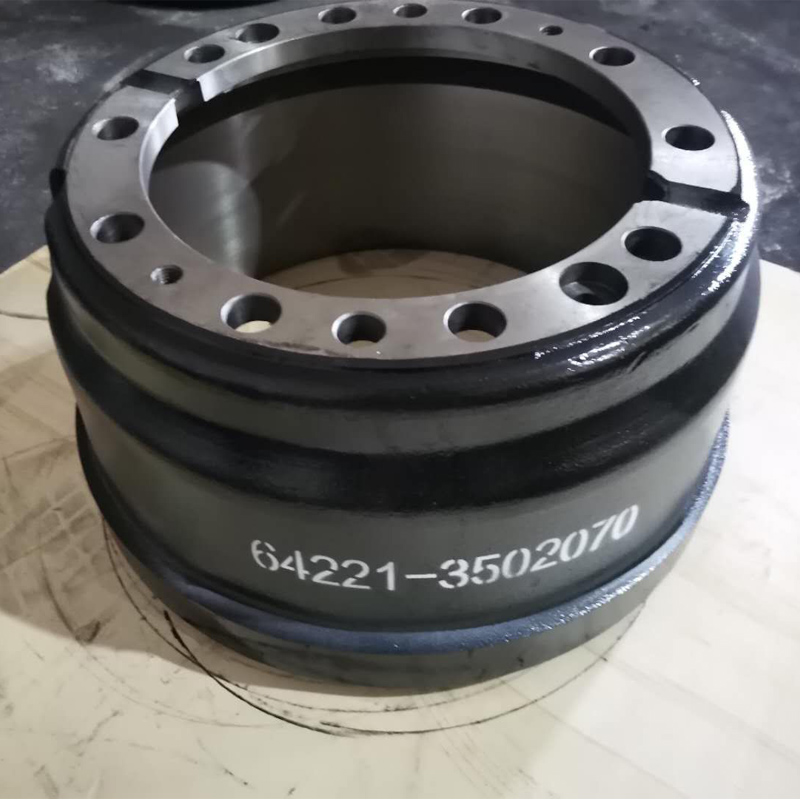Avg . 29, 2024 17:35 Back to list
What is a Brake Drum on a Car?
What is a Brake Drum on a Car?
A brake drum is an essential component of a vehicle's braking system, specifically designed for drum brakes, which are a type of braking mechanism used in many cars, trucks, and other vehicles. To understand the significance of brake drums, it is crucial to grasp how they function within the broader context of a vehicle's braking system.
Structure and Function
The brake drum is typically a cylindrical component that is attached to the wheel hub. It rotates with the wheel and is made from durable materials such as cast iron or composite materials, given the high temperatures and friction it experiences during braking. The primary function of the brake drum is to house the brake shoes and provide a surface on which these shoes can press to create friction, slowing down or stopping the vehicle.
When a driver applies the brakes, hydraulic fluid is sent to the brake cylinder inside the drum. This fluid activates the brake shoes, which expand outward and press against the inner surface of the brake drum. The friction generated between the shoes and the drum is what slows the wheel’s rotation and consequently stops the car.
Advantages of Brake Drums
One of the advantages of brake drums is their ability to provide consistent and effective braking power, especially in vehicles that tend to have heavier loads. Drum brakes generally offer better heat dissipation than disc brakes, which can help prevent fading during prolonged use. This is particularly important in situations like downhill driving or when driving in urban environments with frequent stops.
Moreover, brake drums are typically more cost-efficient to manufacture and can be more straightforward in terms of installation. This makes them a popular choice for many manufacturers, especially in budget-friendly vehicle models.
what is a brake drum on a car

Disadvantages of Brake Drums
Despite their advantages, brake drums do come with some downsides. One of the notable drawbacks is that they can be more susceptible to wear and tear over time. The friction material of the brake shoes can wear down quicker in some applications, leading to the need for more frequent maintenance and replacement. Additionally, drum brakes may not provide the same degree of stopping power as disc brakes, especially in high-performance or high-speed scenarios.
Another issue is that brake drums can occasionally trap moisture and dirt, which can affect their performance. This can lead to corrosion or uneven wear, resulting in a decrease in braking efficiency.
Maintenance and Care
To keep drum brakes functioning effectively, regular inspections are essential. Drivers should pay attention to any signs of wear, such as unusual noises when braking, decreased responsiveness, or a spongy brake pedal. Keeping brake components clean and replacing worn parts promptly is crucial in ensuring safety and extending the lifespan of the braking system.
Conclusion
In summary, a brake drum is a critical component of a vehicle's braking system, working in conjunction with brake shoes to slow down or stop the vehicle when necessary. While they have their advantages, such as cost-effectiveness and good heat dissipation, they also present challenges related to wear and maintenance. Understanding the function and care of brake drums can help drivers appreciate the importance of this often-overlooked component and ensure a safer driving experience. Regular maintenance not only extends their lifespan but also enhances the overall safety and performance of the vehicle’s braking system.
-
Durable Brake Drum MAZ for Heavy Duty Trucks | High Performance
NewsAug.26,2025
-
FUWA: Premium Quality, Reliable Performance & Innovative Solutions
NewsAug.25,2025
-
Liza Brake Drum: Superior Quality & Performance for Safe Driving
NewsAug.24,2025
-
Iveco Brake Drum | Premium OE Quality for Daily & Eurocargo
NewsAug.22,2025
-
Your Brake Drum Man: Quality & Performance Parts
NewsAug.21,2025
-
Explore Japan: Ultimate Travel Guide & Authentic Experiences
NewsAug.19,2025
